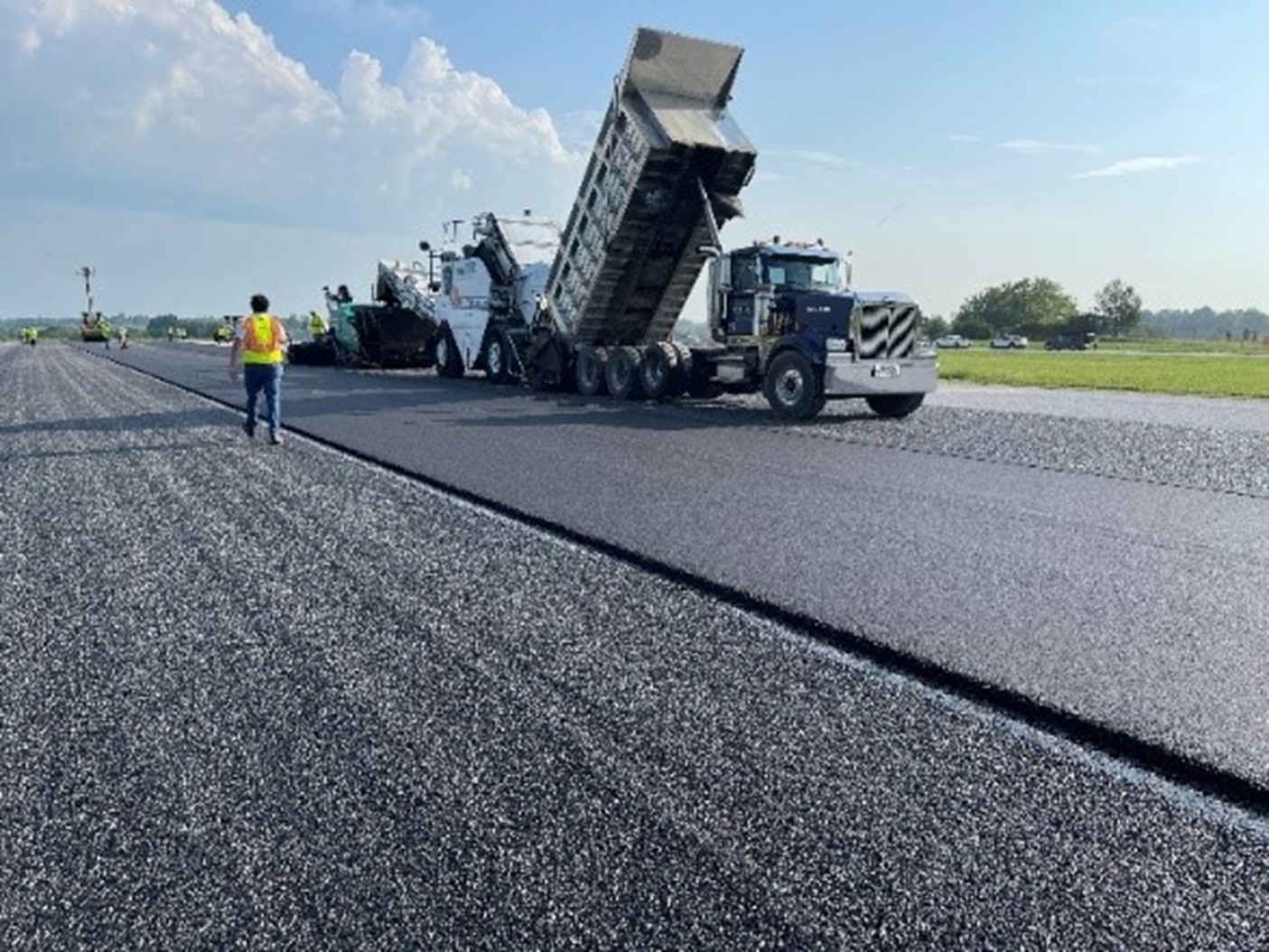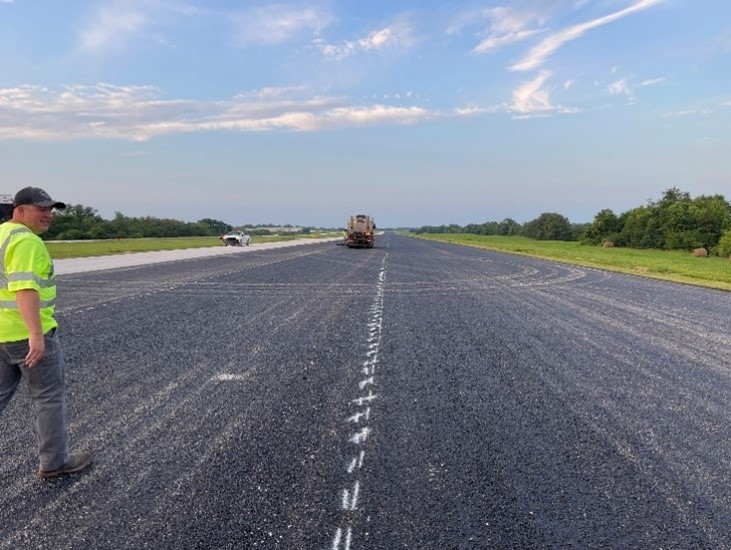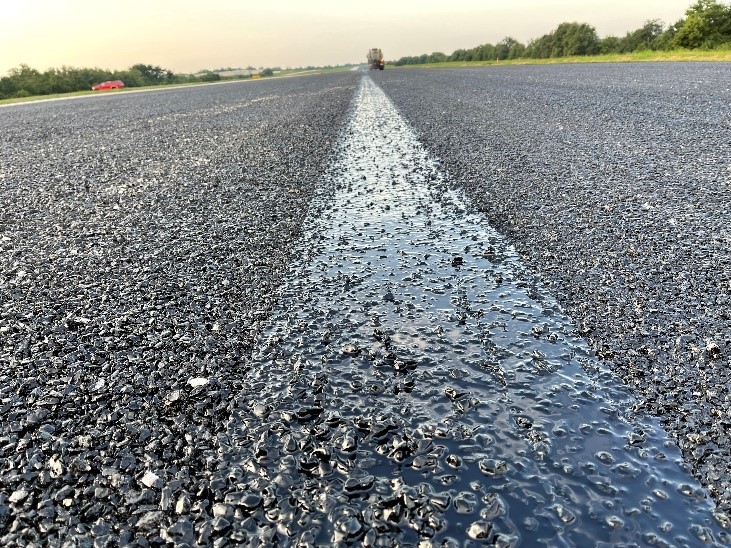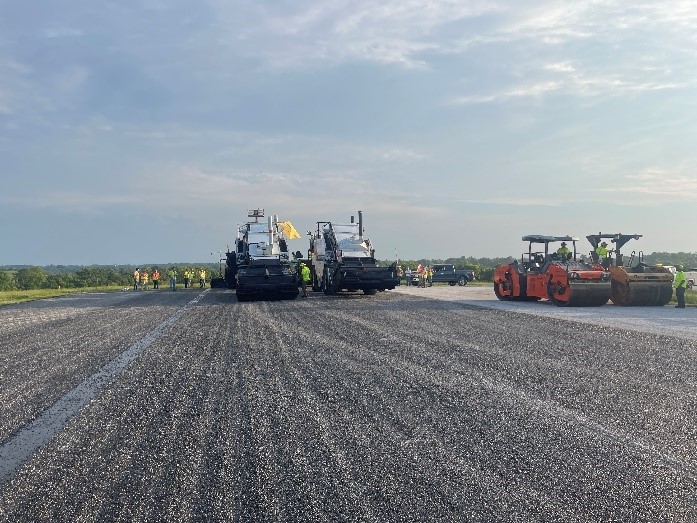Project Summary
The first void reducing asphalt membrane (VRAM) project was completed in the state of Kentucky, marking 24 states and the District of Columbia that use VRAM to save infrastructure funds. VRAM is applied at the location of the longitudinal joint prior to paving to fill a portion of the voids. This greatly reduces permeability and protects the joint area, resulting in longer pavement life.
This project was completed on July 28, 2023, at the Central Kentucky Regional Airport in Madison County, Kentucky.
Project Details
- Applicator: Illiana Construction Co.
- Contractor: Allen Company
- Location: Central Kentucky Regional Airport
- Date Constructed: July 28, 2023
VRAM Application
Weather conditions: 76 F and partly sunny
Representatives from many companies were present including Illiana Construction, Allen Company, National Center for Asphalt Technology (NCAT), Asphalt Materials, Inc. (AMI), Blankenship Asphalt Tech and Training (BATT), Bluegrass Testing, Plantmix Asphalt Industry of Kentucky (PAIKY), American Engineers Inc., and Palmer Consulting.
AMI in Elizabethtown, KY, supplied the CRS-2P for the chip seal that was used on the runway and taxiway and connectors. A double chip seal was used to seal the existing pavement as a crack absorption layer below the surface mix.
J-Band VRAM was applied on runway 18-36 (north-south runway) on the west joint for the full 5000-foot runway length, and the application target was 18 inches wide. VRAM spraying began at 7:20 a.m. over a tacked double chip seal. Spraying was completed at 7:45 a.m.
Paving Process
Weather conditions: 78-90 F and partly sunny
The pavers began lining up north of the runway at 7:50 a.m., and the first set of trucks backed down at 8:10 a.m. Paving started at the north end going south and started with two paving passes in echelon, 18-feet each, in the center of the runway. Half the VRAM width was covered by one paver, and a trimmed joint was created after paving with the other paver. The final compact thickness was 2 inches. Paving equipment included a CAT AP1000 rubber-tired paver and Vogele Super2000-3i tracked paver, with each paver fed by a Roadtec SB2500D MTV. No shadow or flushing was noted with this mix.
The first paver started at 8:18 a.m., and the second paver started at 8:53 a.m. Joint trimming started at 1:25 p.m., and joint adhesive was placed on the vertical face of the trimmed joint. Rakes and shovels were used to load a skid steer for the trimming operation.
The first lane (adjacent to VRAM) was completed, and the paver and MTV moved to the north end of the runway to position for paving the two west lanes in echelon. The first paver was in position on the north end adjacent to the VRAM at 6:25 p.m. Paving started over the VRAM again at 6:45 p.m. with material that remained in the hoppers of the paver and MTV.
The first haul trucks arrived at this paver by 7:20 p.m. to continue paving. The second echelon lane started at 7:45 p.m. Migration on the VRAM joint was visually checked before and after the first roller pass. It was determined to be 3/8” to 5/8” using a wooden craft stick and expected to increase with additional compaction.
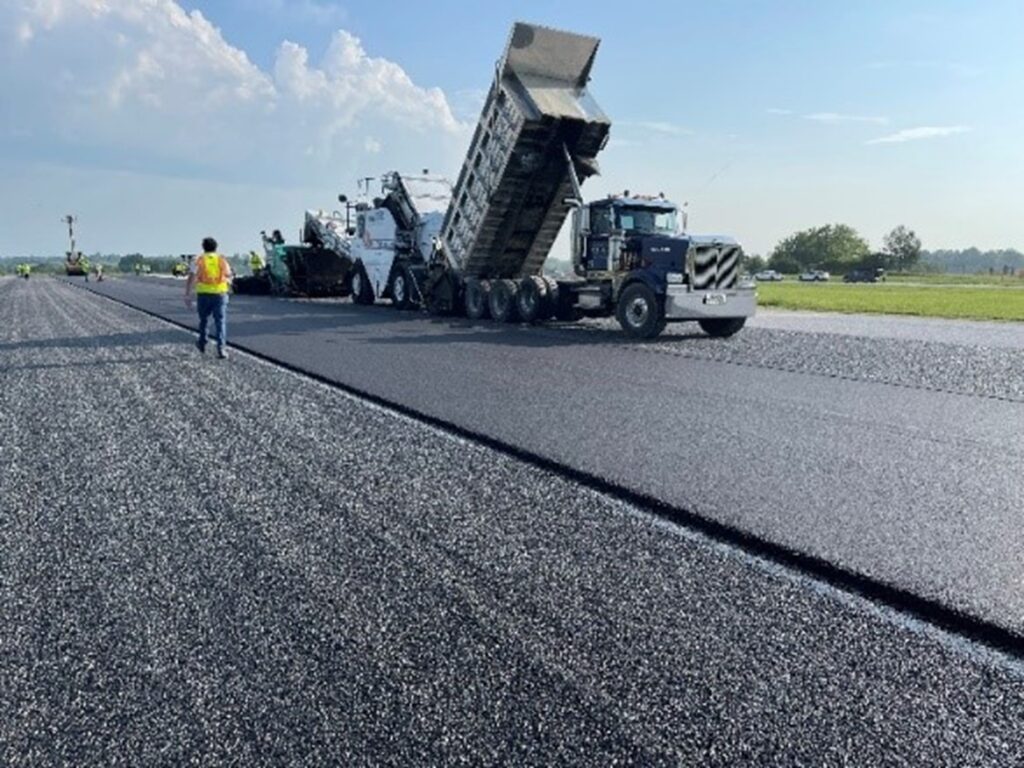
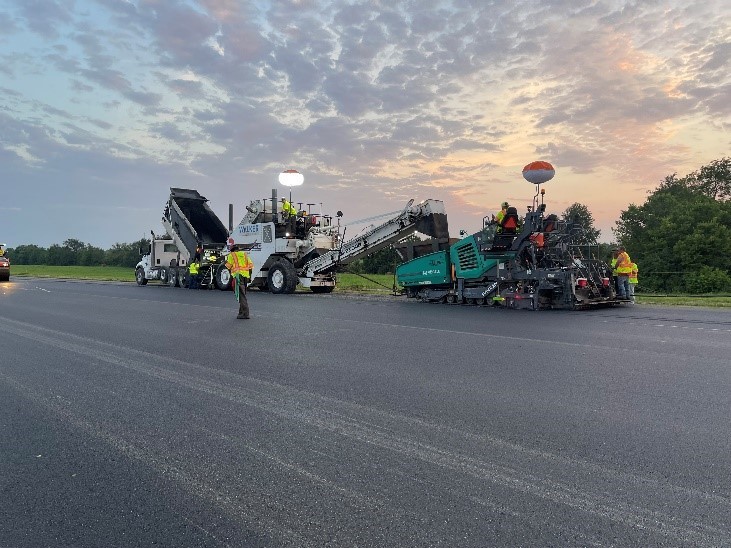
Conclusion
Airfield pavements must be designed to bear the loads imposed by aircraft without failure, be economical to construct and maintain, and have a typical twenty-year life expectancy. Applying VRAM to the longitudinal joints before paving ultimately leads to stronger, safer, and more sustainable roads and reduces the need for ongoing road maintenance.
Explore our interactive map to see more projects that have utilized VRAM at the time of construction and learn more about how longer-lasting roads save money, time, and lives here.
Asphalt Materials, Inc.
At Asphalt Materials, we understand that longitudinal joint deterioration has long been a problem for engineers, applicators, and the communities we live in. VRAM was developed to help create longer-lasting, safer roads through a collaboration between state transportation agencies, industry experts, and the laboratories at Heritage Research Group.
J-Band® is a VRAM product of Asphalt Materials, Inc. and was created in the labs of Heritage Research Group. To learn more about J-Band, or to connect with our team, you can email us at: Marketing@Asphalt-Materials.com.
Editor’s Notes:
J-Band®, CCAP® and T-Bond® are registered trademarks of Asphalt Materials, Inc. AMIBIND™, AMIBOND™, AMICYCLE™, AMIGUARD™ and AMISEAL™ are trademarks of Asphalt Materials, Inc.
J-Band® was created in the labs of the Heritage Research Group (HRG) and is a product of Asphalt Materials, Inc. (AMI). To learn more about J-Band, visit www.thejointsolution.com.

